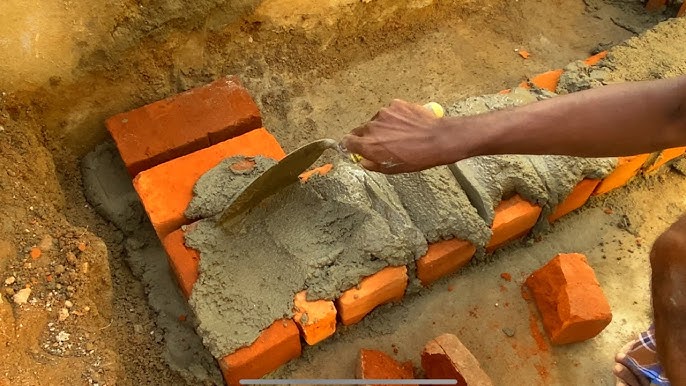Sand and Bricks near u
Sand and Bricks near u – Best Construction Materials Supplier in Mysore
Table of Contents
- Introduction: Sand and Bricks near u – Your Trusted Partner in Mysore
- Why Choose a Local Supplier in Mysore
- Types of Sand We Supply
3.1 River Sand
3.2 Pit Sand (Coarse Sand)
3.3 M‑Sand (Manufactured Sand)
3.4 Concrete Sand / Crushed Sand
3.5 Utility / Fill Sand - Types of Bricks We Offer
4.1 Burnt Clay Bricks
4.2 Fly Ash Bricks
4.3 Sand Lime (Calcium Silicate) Bricks
4.4 Concrete Bricks / Blocks
4.5 Engineering & Special Bricks (Refractory, Hollow, etc.) - How to Choose the Right Sand & Bricks for Your Project
- Our Supply Process, Quality Assurance & Delivery in Mysore
- Frequently Asked Questions (FAQs)
- Related Resources (External Links)
- Internal Links (To your other pages)
- Conclusion & Call to Action
1. Introduction: Sand and Bricks near u – Your Trusted Partner in Mysore
Sand and Bricks near u — that’s the phrase many builders and homeowners type into Google when they want reliable construction materials close by. You’re in luck: we are based in Mysore and provide a full range of sand and bricks for every stage of your build — from foundation to finishing work.
Whether you’re building a new house, doing renovation, or laying a boundary wall, we ensure you get the right quality, the right quantity, and timely delivery. In this post, you’ll learn about all the types of sand and bricks we supply, how to pick the right ones, and why working with a local supplier gives you a competitive advantage.
2. Why Choose a Local Supplier in Mysore
- Proximity & Lower Transport Costs: Since we operate in Mysore, you save on hauling heavy materials like sand and bricks over long distances.
- Better Quality Control: We inspect each batch before dispatch, ensuring consistent quality.
- Faster Delivery & Flexibility: Local operations enable quicker turnaround and adjustments to your order.
- Local Expertise: We understand Mysore’s soil, climate, and construction norms — so we can advise which materials perform better here.
- Customer Trust & Accountability: With a local presence, clients feel more secure and have someone to hold accountable if issues arise.
3. Types of Sand We Supply
Below are the common types of sand we stock and supply as part of “Sand and Bricks near u.”
3.1 River Sand
- Naturally obtained from riverbeds and alluvial deposits.
- Characteristics: smooth, fine-grained, little angularity.
- Ideal for plastering, masonry work, fine finishing, and general concrete mixes when clean.
- Downsides: may have silt or clay content; requires washing or sieving.
- Use case: internal plaster, brick joints, plastering, finishing.
- According to civil engineering references, river sand is preferred for bonding and smooth finish in plastering.
3.2 Pit Sand (Coarse Sand)
- Extracted from pits (2–10 m depth), often red or orange due to iron oxides.
- Coarse and angular with good interlocking.
- Good for mortar mixes, general masonry, bricklaying where strength is needed.
- But for finishing work, it’s less ideal due to rough texture.
- Use case: brickwork, block masonry, leveling work.
- As per references, pit sand is used in mortar and structural mix in many buildings.
3.3 M‑Sand (Manufactured Sand)
- Produced by crushing hard rock (granite, basalt) and sieving.
- Consistent grain size, angular shape, and free of silt/clay when processed correctly.
- It is an eco‑friendly substitute for natural river sand.
- Preferred for concrete, plaster, block work because it performs uniformly.
- Many new constructions in India now favor M‑Sand due to depletion and regulation of natural sand sources.
- Use case: concrete mix, reinforced concrete, blocks, plastering (where specification allows).
- Multiple sources support M‑Sand as a controlled, quality alternative.
3.4 Concrete Sand / Crushed Sand
- Similar to M‑Sand, but specifically tailored for concrete mix.
- Angular particles that interlock well, improving strength and cohesion in concrete.
- Use case: foundations, slabs, beams, structural concrete.
- As per resource, crushed stone sand is ideal for structural concrete work.
3.5 Utility / Fill Sand
- Also called “filling sand” — coarser, used to fill voids, trenches, pipe bedding, backfill, leveling for landscaping.
- Less strict requirements on fineness or uniformity.
- Use case: below slabs, under pavements, in backfill areas.
4. Types of Bricks We Offer
We supply all major kinds of bricks used in modern and traditional construction. Here’s a breakdown:
4.1 Burnt Clay Bricks
- Made from clay, molded, and fired in kilns.
- Traditional and very common.
- Good thermal insulation, durability, cost effectiveness.
- Comes in classes (first class, second, etc.) depending on quality, uniformity, strength, absorption.
- Use case: load-bearing walls, exterior walls, general masonry.
4.2 Fly Ash Bricks
- Manufactured using fly ash (industrial byproduct), cement, sand, and water.
- Lighter, uniform size, and eco-friendly (reuse industrial waste).
- Lower water absorption, lower breakage, lower dead load.
- Use case: non-load bearing walls, partition walls, infill panels.
4.3 Sand Lime (Calcium Silicate) Bricks
- Made by mixing sand, lime (and sometimes fly ash), then subjecting to autoclave or steam curing under pressure.
- Very uniform in size and appearance, good load‑bearing capacity, good sound insulation, smooth finish.
- Use case: aesthetic facades, exposed brickwork, structural walls where smooth finish is desired.
4.4 Concrete Bricks / Blocks
- Made from cement, aggregates, and water, molded into bricks or blocks.
- Can be solid or hollow (with cavities) to reduce weight and improve insulation.
- Higher strength, better moisture resistance.
- Use case: structural walls, partitions, facades.
4.5 Engineering & Special Bricks
- Engineering Bricks: Very dense, low porosity, high strength—ideal for foundations, damp proof courses, retaining walls.
- Refractory / Fire Bricks: For high temperature zones — fireplaces, kilns, chimneys.
- Hollow Bricks / Perforated Bricks: To reduce weight, improve insulation. Used in non-load bearing or partition walls.
5. How to Choose the Right Sand & Bricks for Your Project
Selecting the proper sand and bricks is critical to durability, structural strength, cost, and appearance. Here are guidelines:
| Application | Recommended Sand | Recommended Bricks |
|---|---|---|
| Foundations, structural concrete | M‑Sand / Concrete Sand | Engineering bricks, solid concrete bricks |
| Walls & masonry | Pit sand or M‑Sand | Burnt clay bricks, sand lime bricks, fly ash bricks |
| Partition / non-load walls | Utility / fill sand | Hollow bricks, fly ash bricks |
| Plastering, finishing | River sand or fine M‑Sand | Smooth-faced bricks (sand lime) |
| Heat or fire zones | n/a | Fire bricks / refractory bricks |
| Exterior aesthetic walls | Good quality sand for mortar | Sand lime bricks, facing bricks |
Tips & cautions:
- Always check moisture content, fines (silt & clay) in sand — high fines weaken binding.
- For bricks, check dimensions, absorption rate, compressive strength, and uniformity.
- For structural elements, use bricks with low water absorption and high compressive strength.
- Avoid underburnt, overburnt, or defective bricks — they cause cracks or weak spots.
- For plastering, use finer sand (less angular) to avoid rough finishes.
6. Our Supply Process, Quality Assurance & Delivery in Mysore
We maintain high standards to ensure Sand and Bricks near u are reliable and trustworthy:
- Sourcing & Testing
- We source sand from legal, approved pits and quarries.
- Each batch is screened, washed, tested for grain size distribution, silt/clay content.
- Bricks undergo quality checks — checking crushing strength, water absorption, size consistency. - Sorting & Grading
- We segregate sand into grades (e.g. fine plastering sand, medium, coarse).
- Bricks are sorted into first class, second class, or special class based on quality. - Storage & Handling
- Sand is stored on raised platforms, covered to avoid contamination.
- Bricks are stacked properly, sheltered from rain to preserve quality. - Logistics & Delivery
- We own or coordinate vehicles in Mysore and surrounding areas.
- Timely delivery ensures your work is not delayed.
- For large orders (foundation stage to finishing stage), we coordinate sequence deliveries. - After‑sales & Support
- If there is any defect or discrepancy, we inspect and replace defective batches.
- We advise clients on suitable mixes, approaches, and compatibility.
Because we are local to Mysore, we can respond quickly, adapt to changes, and ensure consistency.
7. Frequently Asked Questions (FAQs)
Q1: Why do some builders prefer M‑Sand over river sand?
A: M‑Sand offers controlled particle size, uniformity, and reduced impurities. With stricter regulation on river sand mining, many constructions now use M‑Sand as a sustainable alternative.
Q2: Are fly ash bricks as strong as burnt clay bricks?
A: For many applications, yes — fly ash bricks can match or approach the strength of clay bricks, provided they meet BIS standards. They also have lower weight and better insulation, but their suitability depends on structural load requirements.
Q3: How much water absorption is acceptable in bricks?
A: For first class bricks, often water absorption below 20% is desirable (varies by standard). Higher absorption means more susceptibility to moisture.
Q4: Can I mix different sand types in concrete?
A: You can, but you must test mix proportions, check for compatibility, and ensure that the final mix meets strength, workability, and durability criteria.
Q5: How much lead time is needed for large orders in Mysore?
A: Usually 1–3 days for moderate orders; for bulk foundation supplies, we may plan deliveries a few days ahead. It depends on logistics and site access.
8. Related Resources (External Links)
- Types of Sand Used in Construction – MCMS India
- Types of Bricks for Construction – RightCon
- JK Cement: Different types of Bricks
- Graana: Types of Bricks Used in Construction
(These external links are do-follow to provide additional references for your readers and strengthen your SEO credibility.)
9. Internal Links (To Your Site Pages)
- Link to your homepage (e.g. “Our Construction Material Supply in Mysore”)
- Link to pages “Our Bricks Range” / “Sand Products”
- Link to a “Contact Us / Get a Quote” page
- Link to project portfolio or completed works
These internal links help users navigate and improve site SEO structure.
10. Conclusion & Call to Action
At this stage, you’ve learned about Sand and Bricks near u — the types, how to pick them, and how a local Mysore supplier (that’s us) handles quality and delivery.
If you’re planning a build or renovation in or around Mysore, contact us now for a free consultation and quote. Let us supply the right sand and bricks exactly when and where you need — from foundation to finish.
We will never break your trust like others do






